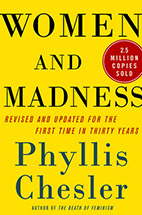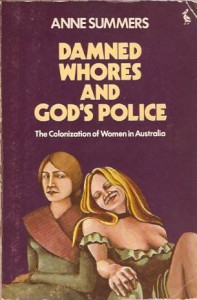“A frank, intimate, urgent voice.” (Maggie O’Farrell)
I have just finished reading the collection of short stories by Charlotte Perkins Gilman titled after the first short story
Written in 1890
I was amazed at how this short story has resonance for me, as a woman, in 2014.
The story is assumed to be autobiographical and describes a young married woman who is suffering from “temporary nervous depression – a slight hysterical tendency”.
As a result she, her husband (John) and her husband’s sister (Jane) spend some time in a rented house in the country. She is mostly confined to the upstairs bedroom with yellow wallpaper. The young woman becomes fascinated and obsessed with this ugly, yellow wallpaper, which in many ways symbolizes the oppression under which she lives.
Her husband is a medical doctor and takes control of his wife and her illness. He has legitimate patriarchal power. He confines her to the bedroom and she is told to have complete rest. She is forbidden to do any work, including her beloved writing.
“He is careful and loving, and hardly lets me stir without special direction.”
As a result she is forced to write secretly. Writing stories she is informed by her husband will stir up “all manner of excited fancies”.
Despite her initially desire to please and obey her husband, we learn of her frustration and anger with his oppression and control of her…
“The fact is I am getting a little afraid of John”.
And the sister-in-law’s role is that of monitoring her – the role of all good patriarchal women. She is … “so careful of me.”
As Anne Summers (Damned Whores and God’s Police) highlighted these are the women who are placed in the position of being the moral guardians of the community – to ensure that women follow the patriarchal line.
Maggie O’Farrell writes in her introduction to the book this is an angry story:
“…fury crackling off the page”.
It is the writer’s relationship with the yellow wallpaper that is so creatively told. She begins to see things in the wallpaper that nobody else can and a woman begins to emerge.
“It is like a woman stooping down and creeping behind that pattern” and the woman becomes many women… “…trying to climb through”.
This story is about oppression – the oppressive nature of marriage and power and control of men over women.
It is also about mental illness. According to Maggie O’Farrell, Charlotte Perkins Gilman herself suffered some form of mental illness following the birth of her child. It is suggested that we may now know this as post natal depression. Charlotte was also forced to go through draconian treatment similar to the woman in her story where she is virtually imprisoned and not permitted any activity including writing.
Phyllis Chesler wrote a ground breaking book in 1972 (revised in 2005) “Women and Madness”
 in which she documents how women are labelled as “mad” when they do not comply with the feminized norm or are unable to cope with the effects of patriarchal domination – and the harrowing treatment that has been imposed on women in the name of healing. There are many examples of this treatment of women throughout history – mad or bad – and it continues today.
in which she documents how women are labelled as “mad” when they do not comply with the feminized norm or are unable to cope with the effects of patriarchal domination – and the harrowing treatment that has been imposed on women in the name of healing. There are many examples of this treatment of women throughout history – mad or bad – and it continues today.
The uplifting aspect of this story is the powerful ending.
She locks the door and peels off the wallpaper.
“’I’ve got out at last’, said I, ‘in spite of you and Jane. And I pulled off most of the paper, so you can’t put me back.”
“What the Yellow Wallpaper does is give the mad woman pen and paper, and ultimately a voice of her own” (Maggie O’Farrell)





